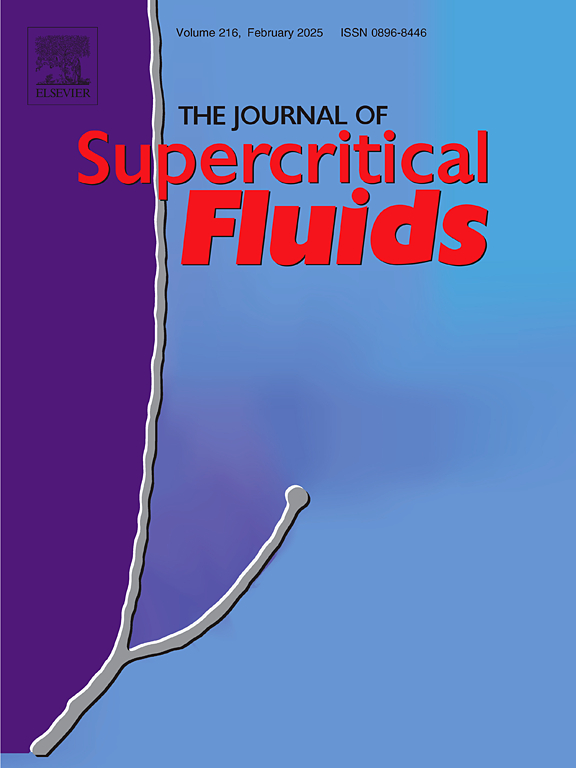铬镍铁合金625在高氯、高碱度超临界水氧化环境中的水热腐蚀:一种新的机理
IF 4.4
3区 工程技术
Q2 CHEMISTRY, PHYSICAL
引用次数: 0
摘要
研究了铬镍铁合金在高氯、高碱度超临界水氧化(SCWO)环境中的水热腐蚀行为。在450°C到500°C之间,由于电化学腐蚀机制向化学腐蚀机制的转变,腐蚀速率显著降低。在25 MPa下,转变温度从420°C上升到450-500°C,这是熔融NaOH稳定离子迁移的结果。在600°C时,熔融NaOH和氧化膜之间的相互作用导致熔化和烧结,导致氧化膜再凝固,但引起了对机械不稳定性的担忧。富氧条件下,保护性内氧化层的铬氧化成可溶的Cr 6 +,耗尽内层,加速外层生长,与近纯超临界水(SCW)相比,外、内层厚度比显著增加。该研究强调了碱度、氧和氯的协同效应,为腐蚀机制提供了新的见解,并为SCWO系统的缓解策略提供了指导。本文章由计算机程序翻译,如有差异,请以英文原文为准。
Hydrothermal corrosion of inconel 625 in high-chlorine, high-alkalinity supercritical water oxidation environments: A new mechanism
This study investigates the hydrothermal corrosion behavior of Inconel 625 in high-chlorine, high-alkalinity supercritical water oxidation (SCWO) environments. A significant reduction in corrosion rate was observed between 450°C and 500°C due to a transition from electrochemical to chemical corrosion mechanisms. The transition temperature increased from approximately 420°C to 450–500°C at 25 MPa, attributed to molten NaOH stabilizing ion transport. At 600°C, interactions between molten NaOH and oxide films cause melting and sintering, leading to oxide film resolidification but raising concerns about mechanical instability. Under oxygen-rich conditions, chromium from the protective inner oxide layer oxidizes to soluble Cr⁶⁺, depleting the inner layer and accelerating outer layer growth, with a significant increase in the outer-to-inner layer thickness ratio compared to near-pure supercritical water (SCW). The study highlights the synergistic effects of alkalinity, oxygen, and chlorine, provides new insights into corrosion mechanisms, and offers guidance for mitigation strategies in SCWO systems.
求助全文
通过发布文献求助,成功后即可免费获取论文全文。
去求助
来源期刊

Journal of Supercritical Fluids
工程技术-工程:化工
CiteScore
7.60
自引率
10.30%
发文量
236
审稿时长
56 days
期刊介绍:
The Journal of Supercritical Fluids is an international journal devoted to the fundamental and applied aspects of supercritical fluids and processes. Its aim is to provide a focused platform for academic and industrial researchers to report their findings and to have ready access to the advances in this rapidly growing field. Its coverage is multidisciplinary and includes both basic and applied topics.
Thermodynamics and phase equilibria, reaction kinetics and rate processes, thermal and transport properties, and all topics related to processing such as separations (extraction, fractionation, purification, chromatography) nucleation and impregnation are within the scope. Accounts of specific engineering applications such as those encountered in food, fuel, natural products, minerals, pharmaceuticals and polymer industries are included. Topics related to high pressure equipment design, analytical techniques, sensors, and process control methodologies are also within the scope of the journal.
 求助内容:
求助内容: 应助结果提醒方式:
应助结果提醒方式:


